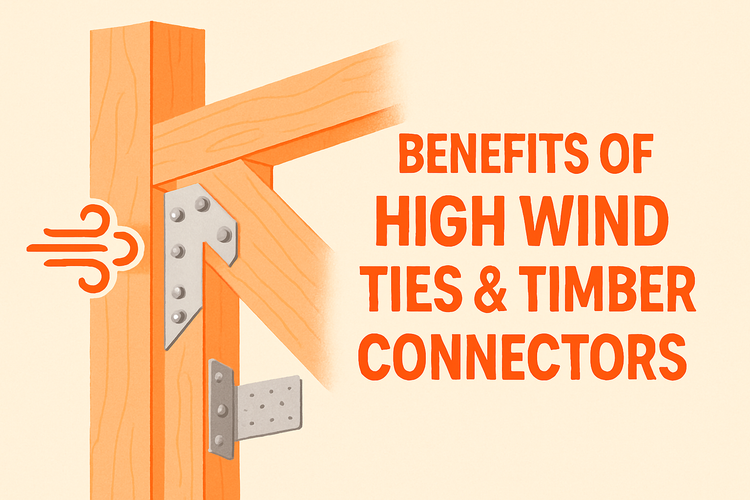Benefits Of High Wind Ties & Timber Connectors For Timber Projects

Enhanced Structural Stability During Extreme Weather
High wind ties and timber connectors are engineered to improve stability during extreme weather conditions. They help secure beams, rafters, and other timber components more effectively than traditional fasteners.
By reinforcing joints and load-bearing areas, these fittings significantly reduce the risk of structural displacement or collapse during hurricanes and high-wind storms. They create an interlocked assembly that distributes wind pressure more evenly across a structure. For timber projects located in wind-prone areas, their use is not only practical but often essential for meeting national building codes and insurance requirements.
Increased Longevity and Performance of Timber Structures
High wind ties and timber connectors extend the functional life of timber structures by reducing mechanical stress on joints. This results in less wear and fatigue over time, especially in settings where the timber is exposed to cyclic weather patterns.
They minimise movement between timber components, curbing structural damage from warping, splitting, or detachment. This is particularly important in buildings using Connectors for cross laminated timber, where alignment and load transfer are key to structural efficiency. As a result, maintenance costs are often lower, and reinforcement retrofits can be delayed or avoided altogether.
In applications such as pergolas, decks, and roof systems, selecting the right wind-rated connector improves resistance against seasonal challenges. The enhanced performance can contribute to better resale value and long-term sustainability of timber-based projects.
Compliance with Building Regulations and Certification Standards
Modern timber constructions often require adherence to strict building regulations, especially in areas prone to storms or seismic activity. High wind ties and timber connectors meet or exceed many of these stipulations.
Using these specialised connectors shows due diligence from builders and architects, ensuring their projects adhere to safety regulations. Products like hurricane ties or tension straps are often mandated in updated building codes, especially for roofs and exterior structures. Rain or high-velocity winds are unpredictable, and selecting the right hardware ensures that construction can pass inspections without costly delays or modifications.
Integrating compliant hardware not only protects physical property but also safeguards insurance coverage. In scenarios where damage occurs, the presence of certified high wind connectors may influence assessment outcomes and support quicker claims processing.
Improved Load Distribution and Timber Joint Integrity
The geometry and design of high wind ties and connectors allow them to evenly distribute loads across timber joints. This is critical when tension or compression forces might otherwise compromise the integrity of a timber assembly.
With thoughtfully installed connectors, builders can reduce the occurrence of localised stress points, especially where horizontal and vertical timbers intersect. Applications that might use post-to-beam joints or roof apex connections benefit most. Projects that incorporate Connectors for Glulam Timber also benefit greatly from uniform load distribution since lamination lines may introduce slight inconsistencies otherwise.
This uniformity reduces the risk of structural deformation or weak points, maintaining both performance and aesthetics. It also allows for greater flexibility in framing and layout designs without compromising on safety or reliability.
Versatile Applications Across Timber Construction Methods
One of the greatest advantages of high wind ties and timber connectors is their versatility across a wide range of timber applications.
From traditional beam-and-post framing to contemporary engineered wood systems, these connectors provide adaptable solutions for a variety of joint scenarios. Whether used alongside restraint straps in truss assemblies or with angle brackets for beam supports, they enhance joint strength while maintaining ease of assembly.
They're suitable for both residential and commercial structures, making them an ideal choice for architects and builders aiming for durability and conformity. This flexibility also supports the evolving needs of modular and sustainable architecture, where pre-fabricated timber sections require absolute precision and consistency during installation.
